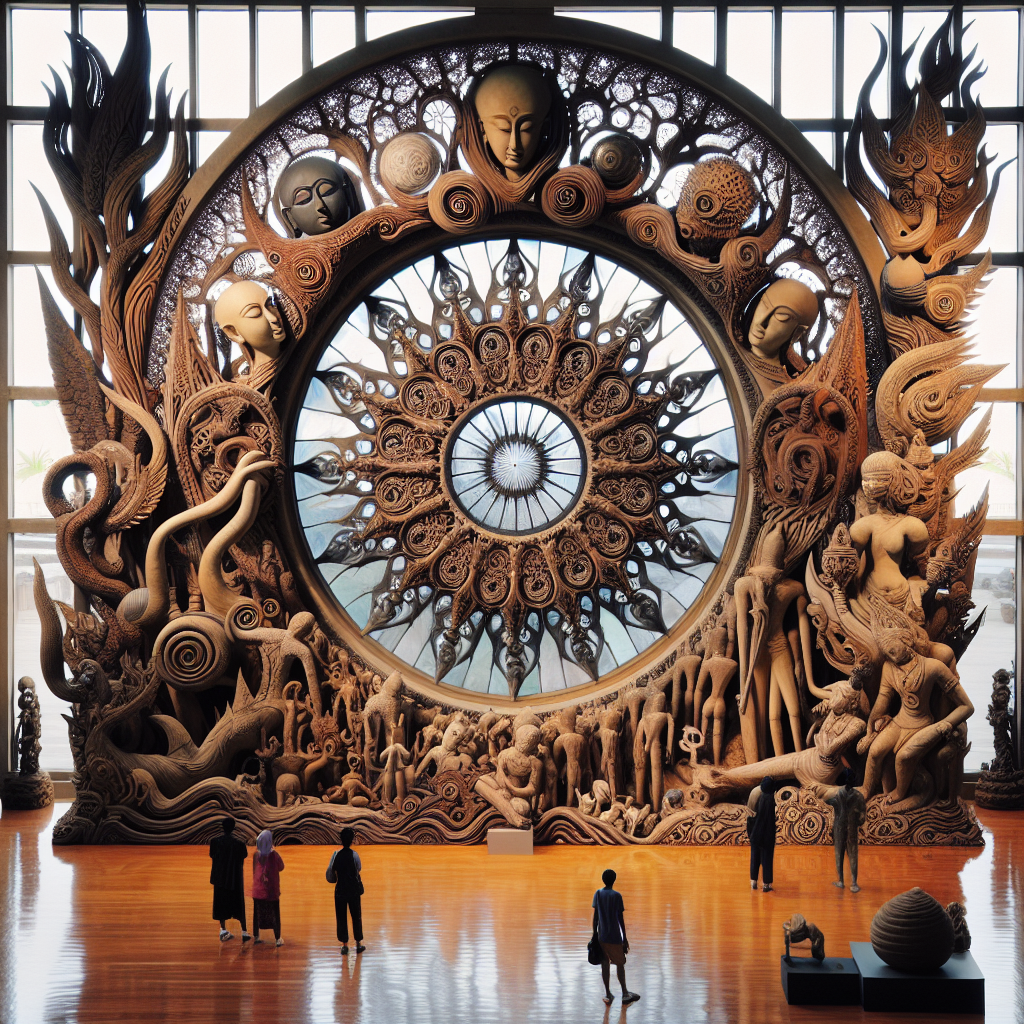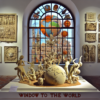Pameran seni pahat dan karya kreatif dari berbagai negara di Jendela Dunia. Menampilkan keindahan dan keunikan seni dari seluruh dunia.
Jendela Dunia: Seni Pahat dan Karya Kreatif di Berbagai Negara
-
Table of Contents
Introduction

Indonesia is a country known for its rich cultural heritage and diverse artistic traditions. One of the most fascinating aspects of Indonesian art is the art of sculpture, or “seni pahat” in the local language. From ancient times to the present day, Indonesian sculptors have created magnificent works of art that reflect the country’s history, traditions, and cultural diversity. In this article, we will explore the world of sculpture in Indonesia, focusing on the creative works of artists from various countries.
The Origins of Sculpture in Indonesia
Sculpture has a long history in Indonesia, dating back to ancient times. The earliest known sculptures in the country were created by the indigenous people who inhabited the archipelago thousands of years ago. These sculptures were often made from stone and depicted various aspects of daily life, such as animals, plants, and human figures.
Over time, the art of sculpture in Indonesia evolved and became more sophisticated. The influence of Indian and Chinese art can be seen in the intricate carvings and detailed sculptures that were created during the classical period of Indonesian art. Hindu and Buddhist sculptures, in particular, became popular during this time, reflecting the influence of these religions on Indonesian culture.
The Diversity of Indonesian Sculpture
One of the most remarkable aspects of Indonesian sculpture is its diversity. The country is home to hundreds of ethnic groups, each with its own unique artistic traditions. As a result, Indonesian sculpture encompasses a wide range of styles, materials, and techniques.
Balinese Sculpture
Bali is one of the most famous regions in Indonesia for its vibrant arts scene, including sculpture. Balinese sculpture is characterized by its intricate carvings and expressive forms. Wood is the most commonly used material for Balinese sculptures, and artists often depict mythological figures, deities, and scenes from Hindu epics.
Javanese Sculpture
Java, the most populous island in Indonesia, is also known for its rich sculptural traditions. Javanese sculpture is heavily influenced by Hindu and Buddhist art, and many of the sculptures found in Java depict religious figures and scenes. Stone is the preferred material for Javanese sculptures, and artists often use traditional carving techniques to create intricate and detailed works of art.
Toraja Sculpture
The Toraja people, who live in the highlands of Sulawesi, have a unique sculptural tradition that is closely tied to their religious beliefs. Toraja sculptures are often made from wood and depict ancestral figures and mythical creatures. These sculptures play an important role in Toraja funeral rituals and are believed to protect the deceased in the afterlife.
Contemporary Sculpture in Indonesia
While traditional sculpture continues to thrive in Indonesia, there is also a growing movement of contemporary sculptors who are pushing the boundaries of the art form. These artists draw inspiration from various sources, including Indonesian history, politics, and social issues.
One prominent contemporary sculptor in Indonesia is Dadang Christanto. His works often explore themes of human suffering and the impact of political violence. Through his sculptures, Christanto aims to raise awareness about the dark chapters of Indonesian history and promote healing and reconciliation.
Another notable contemporary sculptor is Nyoman Nuarta, who is known for his large-scale public sculptures. His most famous work is the Garuda Wisnu Kencana statue in Bali, which stands at a height of 121 meters and is one of the tallest statues in the world. Nuarta’s sculptures often combine traditional techniques with modern materials, creating a unique blend of the old and the new.
The Significance of Sculpture in Indonesian Culture
Sculpture holds a special place in Indonesian culture. It is not only seen as a form of artistic expression but also as a means of preserving and celebrating the country’s cultural heritage. Many sculptures in Indonesia are created for religious purposes, such as temple decorations and ritual objects.
Sculpture also plays an important role in Indonesian society, serving as a medium for storytelling and conveying social and political messages. Through their works, sculptors can address important issues and spark conversations about identity, history, and the environment.
Conclusion
The art of sculpture in Indonesia is a testament to the country’s rich cultural heritage and artistic traditions. From ancient stone carvings to contemporary public sculptures, Indonesian sculptors have created magnificent works of art that reflect the country’s history, traditions, and cultural diversity. Whether it is the intricate wood carvings of Bali, the detailed stone sculptures of Java, or the mythical figures of the Toraja people, Indonesian sculpture continues to captivate and inspire. Through their creativity and craftsmanship, Indonesian sculptors have not only preserved the past but also shaped the future of the country’s artistic landscape.







